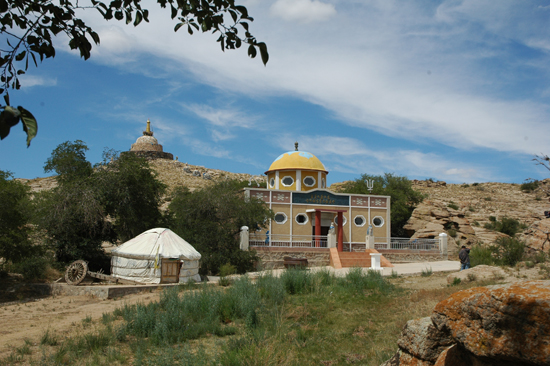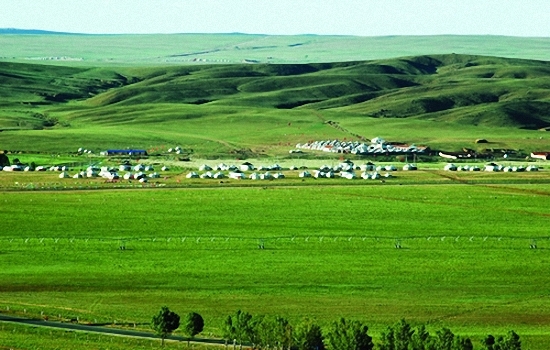Darhan Muminggan Joint Banner

Bailingmiao town is where the government of Darhan Muminggan Joint Banner is located. [Photo provided to chinadaily.com.cn]
Darhan Muminggan Joint Banner is one of 20 border banners and 33 animal husbandry banners found in North China’s Inner Mongolia autonomous region.
The north of the banner borders Mongolia, with a borderline of 88.6 kilometers long.
It spans an area of 18,177 square kilometers and has a population of 120,000, of whom 18,300 belong to ethnic minorities including 17,300 from the Mongolian ethic group.
The banner boasts the China-Mongolia border checkpoint or inland port called Mandula Port, which is open all year round and it is one of the important channels opening to the north in the Hohhot-Baotou-Ordos area.

Hasar Memorial Hall is located in Darhan Muminggan Joint Banner. Habutu Hasar was one of Genghis Khan’s three full brothers who formed and administered the left military administrative district -- or Left Wing -- of the Mongol Empire, on the eastern edge of Inner Mongolia. He is considered one of the greatest politicians and strategists in Mongolian history. [Photo provided to chinadaily.com.cn]
Darhan Muminggan Joint Banner is rich in mineral resources. There are roughly 32 kinds of metal and non-metallic mineral resources including iron ore, lignite, phosphate rock, rare earths, gold, manganese, copper and fluorite.
The development of wind energy and solar energy in the banner is promising. The average amount of effective wind speed per year is more than 6,000 hours and the total wind energy resource reserves are 31.81 million kilowatts. The average annual hours of sunshine are 3,100 hours and the total annual amount of solar radiation averages more than 6,000 joules per square meter.
The district covers 16,600 square kilometers of grassland and 80,000 hectares of farmland. It has spared no effort in developing its modern agriculture industry and animal husbandry. Its agricultural and livestock products such as potatoes, beef and mutton, as well as fur, sell well across the nation.

Xilamuren Grassland is a big draw to visitors. It was the first tourist attraction opened in Inner Mongolia autonomous region. [Photo/dmlhq.gov.cn]
The district features many historical attractions and a range of cultural scenery, including Xilamuren Grassland which was the first scenic spot opened to tourists in Inner Mongolia, the cliff paintings at Ulaanqab and the Great Walls constructed during the Han Dynansty (206 BC-AD 24) and the North Wei Dynasty (AD 386-557).
It holds a nomadic culture tourism festival every summer, attracting many tourists from around the world.
The banner has maintained steady growth in its economic development. In 2018, its regional GDP showed year-on-year growth of 3.7 percent. Its total retail sales increased by 6.2 percent year-on-year and the per capita annual disposable income of urban and rural pastoral residents hit 39,978 yuan ($5,646) and 15,257 yuan, respectively, an increase of 7.4 percent and 10.9 percent.
Related reading:
Darhan Muminggan Joint Banner in Baotou plugs cultural, tourism investment
